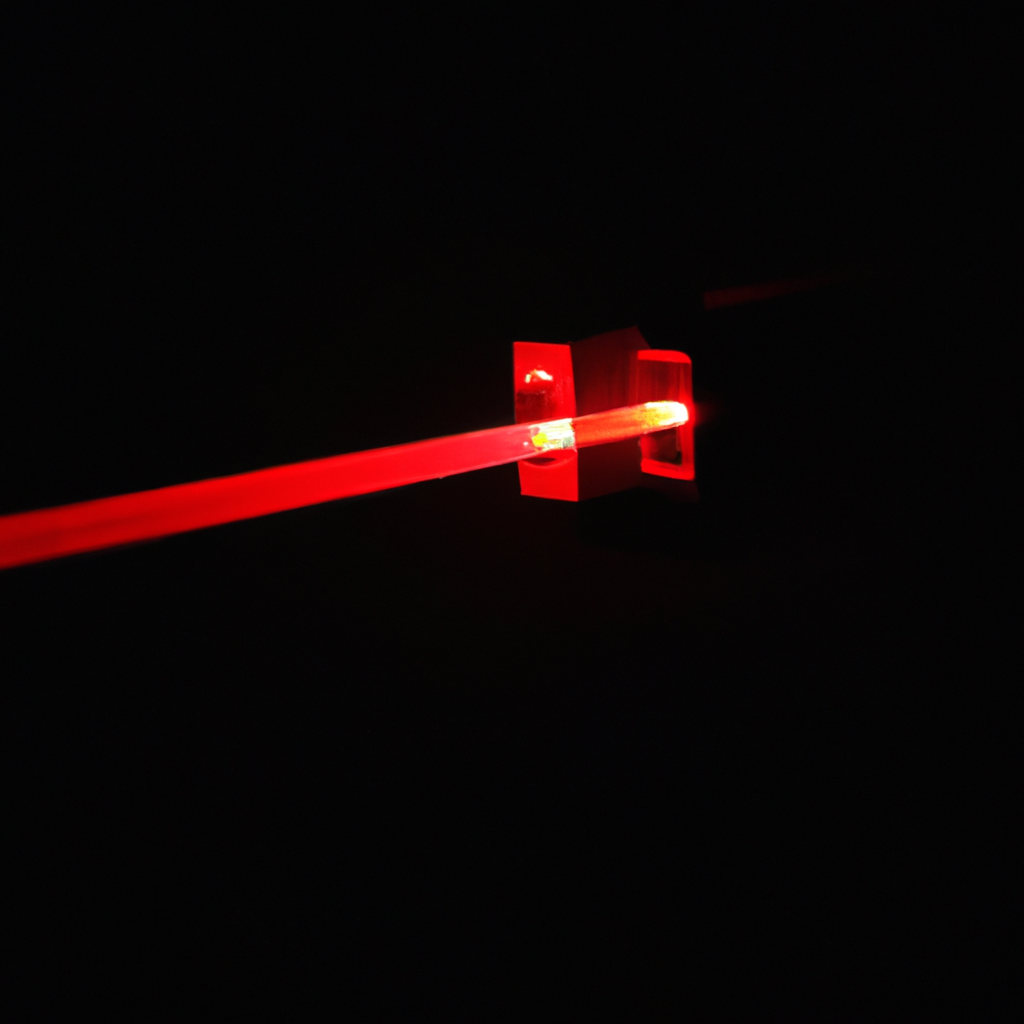Laser pointers have become a ubiquitous tool in presentations, lectures, and even as a playful toy for pets. But have you ever wondered how a tiny device can emit such a powerful and focused beam of light? In this article, we will explore the mechanics of laser pointers, including its technology, physics, and applications.
What is a Laser Pointer?
A laser pointer is a small handheld device that emits a concentrated beam of light. It is typically powered by batteries and can fit in the palm of your hand. The laser beam is produced by a laser diode, which is a tiny semiconductor device that emits light through a process called stimulated emission.
How does a Laser Pointer Work?
The laser mechanism inside a laser pointer is based on the principles of laser physics. Laser stands for “Light Amplification by Stimulated Emission of Radiation.” The laser diode emits photons of light, which are then amplified by bouncing back and forth between two mirrors. As the photons bounce back and forth, they stimulate the emission of more photons, creating a coherent beam of light.
The laser beam produced by a laser pointer is highly focused and collimated, meaning that the light waves are all moving in the same direction and at the same frequency. This is achieved through the use of a lens that focuses the beam of light into a narrow point. The laser beam is also monochromatic, meaning that it consists of a single color or wavelength of light.
Laser Technology
Laser technology has come a long way since its invention in 1960. Today, lasers are used in a wide range of applications, from surgery to manufacturing. The laser diodes used in laser pointers are typically made from gallium arsenide, a semiconductor material that emits light when a voltage is applied to it.
Laser technology has also led to the development of other types of lasers, such as gas lasers, solid-state lasers, and dye lasers. Each type of laser has its own unique properties and applications.
Laser Application
Laser pointers are most commonly used in presentations and lectures to highlight key points or to point out specific items on a screen or projector. They are also used by astronomers to point out stars and other celestial objects.
In addition to its use in presentations and astronomy, lasers are used in a wide range of applications, including:
– Surgery: Lasers are used in surgery to cut and cauterize tissue, as well as to remove tattoos and other skin pigments.
– Manufacturing: Lasers are used to cut, weld, and drill materials in manufacturing processes.
– Communication: Lasers are used in fiber optic cables to transmit information over long distances.
– Entertainment: Lasers are used in light shows and concerts to create dazzling visual effects.
Laser Safety
While laser pointers may seem harmless, they can actually be quite dangerous if not used properly. The intense beam of light emitted by a laser pointer can cause eye damage and even blindness if directed at the eyes. It is important to always use caution when handling a laser pointer and to only use it for its intended purpose.
In conclusion, laser pointers are a fascinating example of laser science and technology. While they may seem like a simple device, they are actually based on complex principles of physics and engineering. By understanding how laser pointers work, we can better appreciate the remarkable technology that powers them.







